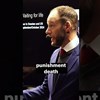city
NEW DATE! Avner de-Shalit: Cities and immigrants: Should cities have the power to decide who can settle in them?
Avner de-Shalit, Professor of Political Science and Max Kampelman Chair of democracy and human rights at the Hebrew University of Jerusalem.Abstract All over the world immigrants move to cities, rather
Completed: Improved health
With the help of big data and AI, children and young people in the risk zone for ill health can be identified for individually tailored efforts. The project is done in Angered.
Christian Rossipal
I primarily do research in film and media studies but also work as a filmmaker and curator. My main interests lie in film archives, migration, and media archaeology. I have published my research in jou, , and , and have taught at New York University and the City University of New York.

Paolo Velásquez
I am a researcher at the Institute for Futures Studies and the University of Oxford'sCentre on Migration, Policy and Society (COMPAS).I am also affiliated to the Center for Responsible Leadership at t
Competition: Your vision of a positive future
The Paris Institute for Advanced Study and the 2100 Fondation in partnership with the Institute for Futures Studiesare launching the first Positive Future competition in order to encourage the elaboration

Melinda A. Roberts
I am a professor of philosophy at the College of New Jersey and serve as the coordinating prelaw advisor for the College. Previously, I worked as an associate at the law firm of Cleary, Gottlieb in Ne

Stefan Swartling Peterson
Stefan Swartling Peterson is a public health physician and professor of global transformation for health at Karolinska Institutet, Sweden and Makerere University, Uganda A former Chief of Health for UN

Chesa Boudin, former District Attornay in San Francisco, about crime and punishment.
Does the severity of punishment affect crime rates? One common argument for increasing the length of prison sentences for serious crimes is that harsher penalties will deter people from committing
Information dynamics shape the sexual networks of Internet-mediated prostitution
2010. Proc Natl Acad Sci U S A 107:5706-5711. Abstract Like many other social phenomena, prostitution is increasingly coordinated over the Internet. The online behavior affects the offline activity; the r
Conference on organized violent threats
This conference is a collaboration between Sweden and Canada Organized crime and violent extremism are violent threats to the democratic society. Sweden is a country where the number of shootings and e








